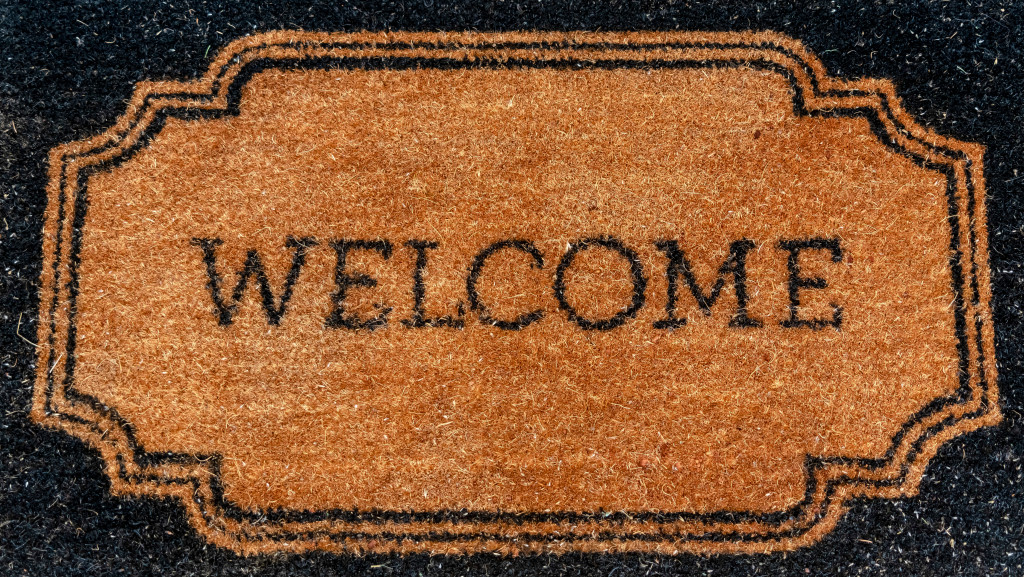When it comes to choosing a mat for your home, there are a few things you need to take into consideration. What type of flooring do you have? What is the function of the mat? How much traffic will it see? Answering these questions will help you narrow down your options and choose the right one for your needs.
Types of Mats
There are three main types of mats: entry mats, area rugs, and special-purpose mats.
Entry Mats
You could use these mats inside your front and back doors. Entry mats would keep your floor clean and protect your guests from slips and falls. If you’re tired of dirt and debris ruining your beautiful hardwood floors, tile, or linoleum, these mats are perfect! Just wipe your feet before coming inside and again on the indoor mat, and you’ll be able to walk around without worrying about damaging your flooring.
Area Rugs
Area rugs are designed to serve a purpose in specific areas and are a great alternative to wall-to-wall carpets. They come in many colors, sizes, and textures that can fit any decor you want. Not only that, but they’re easy to remove and clean too.
If you have pets or small children running around at home, area rugs are an ideal way of protecting your floors from dirt and grime. Also, if you ever get bored with the design or want to redecorate—it’s no problem! All you need to do is switch out one area rug for another.
Special-Purpose Mats
There are mats designed for specific purposes, such as anti-fatigue mats, which are perfect for standing on while cooking or doing the dishes. These mats provide cushioning and support to help reduce foot, leg, and back pain. If you’re looking for a mat in front of your sink, stove, or counter, an anti-fatigue mat is what you need.
Function
The next thing you need to consider is the function of the mat.
- Do you need a mat that will absorb water?
- One that will provide anti-fatigue support?
- Or do you need something to trap dirt and debris?
Once you know what function the mat will serve, you can start looking at materials.

Materials
Entry mats are effective at trapping dirt and moisture. There are various materials that door mats and entrance matting can be made from, such as nylon, coir, polypropylene, cotton, microfiber, and natural rubber. Nylon is a synthetic fiber that’s strong and durable. It doesn’t absorb water well, making it great for trapping dirt and debris.
Coir is a good option if you’re looking for a more natural, eco-friendly material. It is made from coconut husks and is biodegradable. Placing a coir door mat at your entrance will help reduce the amount of dirt and debris tracked into your home, and you are sure that it can withstand a lot of wear and tear.
Polypropylene is another synthetic fiber that’s similar to nylon. It’s also strong and durable but tends to fade in direct sunlight. Cotton is a soft, natural fiber absorbent and traps dirt well. Microfiber is also a synthetic fiber that’s known for being extremely soft. It’s also lint-free, making it ideal for trapping dust and other small particles. Natural rubber is made from the sap of rubber trees. It has excellent water-resistant properties, making it perfect for use as an entry mat.
On the other hand, area rugs and special-purpose mats can be made from various materials depending on their intended function. For example, an anti-fatigue mat might be made from memory foam, while a water-absorbent mat might be made from microfiber. Area rugs are most commonly made from olefin, a soft and affordable fiber that is stain-resistant and holds color well. However, it is not resilient and, once damaged, can be very difficult to repair.
Size and Shape
The size and shape of your mat should be determined by its intended location. For example, an entry mat in front of a double door should be long enough to accommodate both doors opening simultaneously.
If you’re placing an area rug in your living room, make sure it is proportional to the size of the furniture in the room. And if you’re looking for a special-purpose mat for your kitchen, there are many shapes and sizes designed specifically for placement in front of sinks or stovetops.
Ready to Find the Perfect Mat?
There are many things to consider when choosing a mat for your home. But by considering factors like type, function, material, size, and shape, you can narrow down your options and find the perfect mat for your needs. So don’t wait any longer—get out there and find the perfect mat for your home today!

